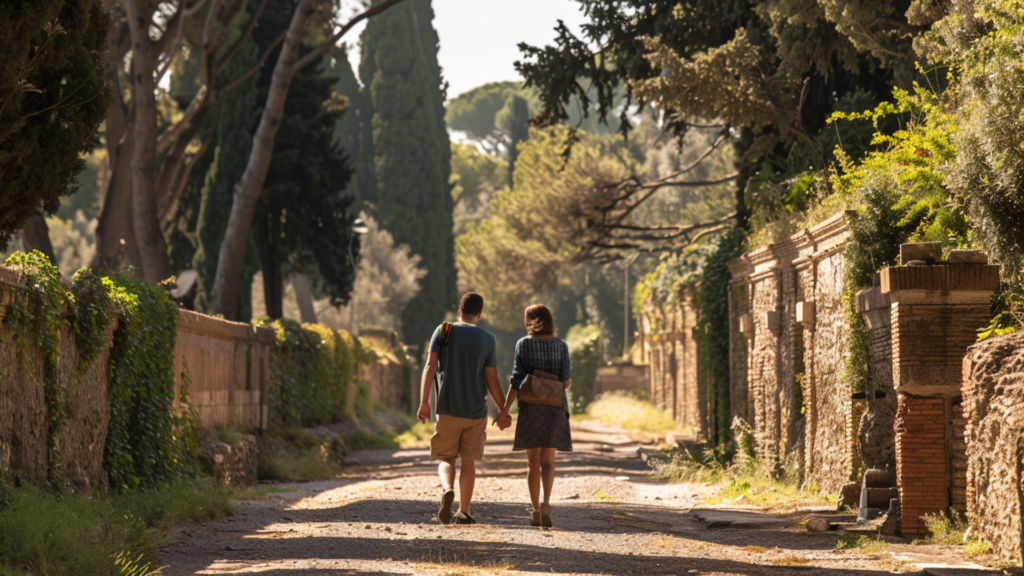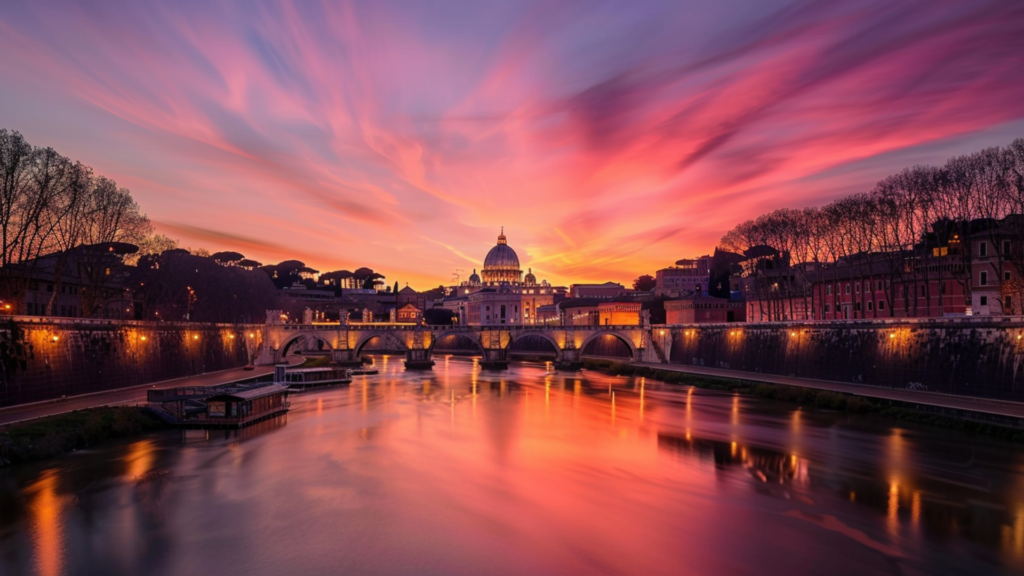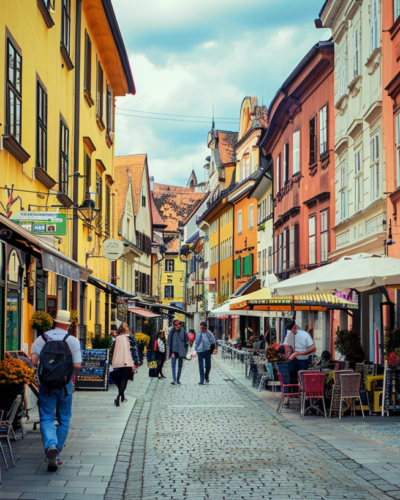Fun fact: Rome boasts more than 2,000 fountains in an array of forms and sizes, surpassing any other city worldwide. Alongside these fountains are the many landmarks in Rome that narrate timeless stories, quenching far more than a mere thirst for beauty, and inviting visitors to delve into a rich tapestry of history and art that spans ages.
From the time when King Romulus founded Rome in 753 BC, the city has then been a vivid testament to the layers of human history, where each stone, ruin, and edifice whispers tales from millennia past. Here, visitors tread the same ground as where ancient gladiators dueled to the death, storied philosophers reflected upon life’s musings, and architectural feats lorded over the sands of time.
Rome is a sprawling canvas painted with strokes of history, boasting more than 900 churches and countless landmarks, each contributing to its reputation as a living museum. This remarkable fusion of the ancient and the modern renders Rome a captivating study in contrasts, where the echoes of the ancient world resonate amidst the bustling life of a vibrant metropolis.
As we set forth to explore the ‘Eternal City,’ we invite you to discover these notable landmarks in Rome that have shaped its storied past and continue to influence its dynamic present, offering a journey that promises to enchant and enlighten at every turn.
Exploring The Most Iconic Landmarks in Rome
Rome easily offers a journey back in time through its ancient wonders. From the Colosseum to the spiritual depth of the Basilica de San Clemente, each site serves as a portal to the past, revealing a history that has shaped what many call the ‘Eternal City.’
The Colosseum, perhaps the most iconic symbol of Rome, was an amphitheater that hosted gladiatorial combats and public spectacles. Its massive structure, capable of seating thousands, stands today as a testament to the architectural ingenuity and the cultural significance of entertainment in ancient Rome.
Similarly, the Roman Forum served as the heart of Roman public life, hosting triumphal processions, elections, and public speeches. Today, its sprawling ruins echo the power of the Roman Empire, inviting visitors to wander through courtyards and temples that once formed the center of the ancient city.
Meanwhile, the Palatine Hill is where Rome’s foundation myth comes to life. As the city’s mythical birthplace, it was favored by emperors and aristocrats for their palatial homes. The ruins here offer a glimpse into the opulent lives of Rome’s ancient elite, set against a backdrop of sweeping city views.
Then, there’s The Pantheon— a marvel of ancient engineering that has endured ages as a temple dedicated to the gods. Its perfectly proportioned dome and oculus illuminate its interior, highlighting the Romans’ architectural prowess and their relationship with the divine.
On the other hand, the Basilica de San Clemente offers a unique journey through the past with its three-tiered complex of buildings. Descend from a 12th-century basilica into a 4th-century church, then further into ancient Roman buildings, experiencing the layers of history that define Rome.
Together, these prominent landmarks not only showcase Rome’s architectural and cultural achievements but also tell the story of a civilization that continues to fascinate and inspire the world.

Go Where The Crowds Don’t: Rome’s Lesser-Known Beautiful Landmarks
While the Colosseum, the Pantheon, and the Roman Forum continue to capture the world’s imagination, the city is also home to lesser-known wonders that offer a deeper dive into its history.
The Baths of Caracalla, once a grand complex of public baths, now stand as a hauntingly beautiful ruin. Constructed between AD 212 and 217, these baths were a center of daily life, offering not just bathing facilities but also libraries, gardens, and shops. Walking through the remnants of this massive structure, one can imagine the social and leisurely activities that once flourished here.
You can also discover the Appian Way as you go North, one of the earliest and strategically important Roman roads. Stretching from Rome to Brindisi, you’ll see ancient tombs and ruins as you stroll or go for a bike ride. The road’s serene surroundings and archaeological sites tell tales of Rome’s expansion and the daily lives of its citizens.
And if you find yourself near Leonardo da Vinci–Fiumicino Airport, you’ll get to see Ostia Antica at the mouth of the River Tiber. Once Rome’s bustling seaport, it is now a well-preserved archaeological site. Wander through the old streets, opulent homes, and public buildings that offer insights into the commercial activities that once supported the Roman economy.
On the other hand, the Aventine Keyhole offers one of Rome’s most enchanting views through the keyhole of the Priory of the Knights of Malta. This unique perspective frames a perfectly composed view of St. Peter’s Basilica, standing as a testament to Rome’s layers of hidden stories and perspectives.
Exploring Rome’s lesser-known ancient wonders truly offers a unique and intimate experience of the city’s vast historical tapestry. Each site has its own story and charm, enriching your understanding of Rome’s complex past and enduring legacy.
Essential Tips for Exploring Rome
Now that you know where to find the famed landmarks in Rome, here are some tips to help you fully appreciate the city’s timeless beauty:
Utilize the Roma Pass. If you’re planning to visit multiple sites, the Roma Pass can be a cost-effective way to access various attractions. It offers free entry to certain sites, discounts for others, and includes public transportation, making it easier and more affordable to explore Rome’s renowned landmarks.
Go for early morning or late afternoon visits. Many of Rome’s ancient sites, like the Roman Forum and the Colosseum, are open-air and lack shade. To avoid the midday heat and the crowds, aim to visit these sites early in the morning or later in the afternoon. Not only will the light be more conducive to photography, but you’ll also enjoy a more serene atmosphere.
Book guided tours for in-depth insights. While exploring on your own has its merits, booking a guided tour of some of the ancient sites can greatly enhance your understanding and appreciation of their historical significance. Knowledgeable guides can provide context, share hidden stories, and point out details you might otherwise miss.
Opt for night tours for a different perspective. Some of Rome’s notable landmarks, including the Colosseum, also offer night tours. Exploring these sites under the stars offers a completely different experience, with dramatic lighting and a quieter atmosphere that can make you feel as if you have stepped back in time.

Witness The Enchanting Landmarks in Rome with This City Knows
Going on a journey through Rome is to walk in the footsteps of history, where every corner and cobblestone has a story to tell. The ‘Eternal City’ offers not just a glimpse into the past, but a living, breathing testament to human achievement and endurance. Truly, Rome’s timeless journey is one that captivates the imagination, kindles the spirit of exploration, and deepens our connection to the ages that have shaped our world.
As you stand amid the ruins of the Roman Forum, gaze up at the grandeur of the Colosseum, or seek solace in the Pantheon, you’re participating in a tradition of awe and wonder that has drawn travelers to Rome for centuries. Yet, beyond these iconic monuments, the city’s lesser-known marvels and hidden gems await, ready to reveal the layers of history and culture that make Rome truly eternal.
With This City Knows as your guide, the depth and breadth of these beautiful landmarks in Rome unfold before you, inviting further exploration and discovery. Whether it’s uncovering the secrets of the city’s early Christian catacombs, marveling at the engineering marvels of its aqueducts, or simply finding tranquility in a secluded medieval cloister, Rome offers endless opportunities for exploration and discovery.
So, allow us to guide you through Rome’s timeless beauty and historical riches. Together, we’ll explore the Eternal City, not just as tourists, but as travelers in time, connecting with the past in a way that illuminates our present and enriches our understanding of the human story.








